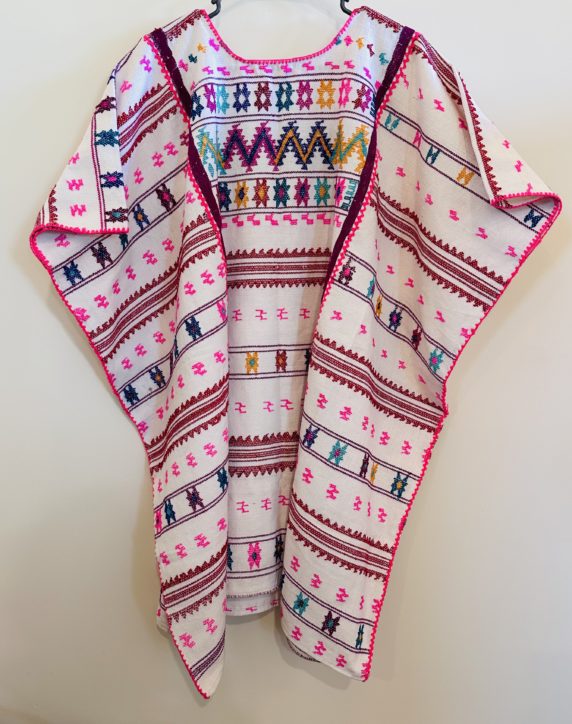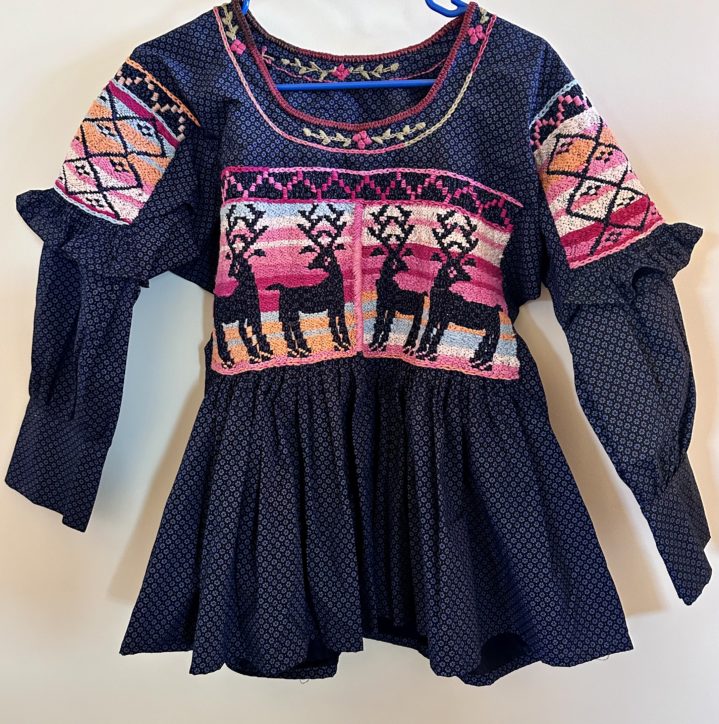We didn’t set out to buy two cute, baby guajolotes. It just happened. An impulse purchase, you might say. My impulses tend to center around clothes, jewelry, or maybe a larger than necessary size ice cream cone. My Zapotec neighbors, on the other hand, covet what they can add to their barnyard.
Where I live in Oaxaca, one sign of a woman’s wealth and independence is how many pigs, goats, guajolotes, or chickens she owns. Raise them to plump and they convert to pesos in a year or so. Pocket money she can do with as she pleases.
What is a guajolote, you may ask?
This is a pre-Hispanic wild turkey indigenous to Mexico, named by the Aztecs, and preferred to domesticated turkey by locals in the know!
I had no particular goal in mind on Sunday, my last day in Oaxaca until June, but to pick up some little clay dishes made in San Marcos Tlapazola for my sister. She uses them as handy soap dishes. Some people use them for salsa.
The ladies of San Marcos ply the market with bundles of little clay vessels and figures wrapped in their rebozos held close to their bosoms. They also set up shop on the street, displaying platters, clay pitchers, tortilla griddles, and other kitchen essentials. I’m especially fond of their primitive figures.
My neighbors had no particular goal in mind either. We wandered for a while. Then, they went shoe shopping. We stopped for nieves at my favorite Tlacolula purveyor Nieves Rosarita, one of the many stalls that line the street near the Banamex bank ATM.
Nieves means snow in Spanish, is like ice cream but with less cream and more intense flavor. My favorite is Besos de Angel with cherries, nuts, and fresh grated carrots. Truly yummy. Especially when topped with tuna aka the fruit of the nopal cactus, not the fish. Next, we followed the abuela through the labyrinth to find the seller of Atzompa green pottery, and finally began to make our way out of the market back to the car.
Then, there they were. Love at first sight. None of us could walk away, though I must confess we tried. I even reached out to touch their silky smooth feathers. After a heavy bargaining session, not one, but two guajolotes had a new home. We could tell by their chortles and cries that they needed to be together and this was, in part, a guilt purchase, too.
On the way to the car, many people stopped us along the way in envy. Envy is when another admires something you have and then asks, how much did it cost. The humble reply is to always understate the value. This is not a boastful culture.
As they settled comfortably on the lap of their new owner in the front seat of my car, I reached out to stroke their long skinny necks. Their eyes closed and they fell asleep on the ride home. Definitely a first for La Tuga and me!
































Another Tlacolula Market Sunday, Fiesta of Our Lady of the Rosary
The festival of Our Lady of the Rosary — Fiesta de la Virgen del Rosario — is a big deal in Tlacolula de Matamoros, the county seat for the Tlacolula valley part of the Valles Centrales de Oaxaca.To give you a sense of it, I’ve changed the blog header once again.
Last Sunday huge crowds gathered under a huge tent for a noon mass in the church courtyard. The sanctuary isn’t large enough to contain everyone who gathered here from the surrounding villages.
Sunday market day in Tlacolula is always a treat and a special day to meet up with family members and friends, and to buy supplies. This Sunday feast day was even more so.
The streets were impassable because they had been set up with carnival rides, sideshows and a midway filled with carnival games. It was a juxtaposition to see women in traditional indigenous dress walking alongside bumper cars and pitch ball games.
What caught my attention was the big top tent right beside the church dome on the skyline.
We could tell this day was special. Women wore their most glittery rhinestone jewelry. Their blouses, skirts and aprons were embellished with sequins.
Families strolled with ice cream cones filled with Leche Quemada and topped with frozen Tuna nieves. That is NOT fish, folks! Children everywhere love cotton candy and Oaxaca is no exception.
Men come to shop for things like cane and iron tools. Women shop for scarves, shawls, aprons and food.
Sheri and I met up at the rebozo section where she was on a quest. These shawls are ikat dyed and woven with either cotton or artecel, a silky natural fiber that is a recent substitute for more costly silk.
The ikat shawl is a utilitarian part of the local costume used to wrap babies, groceries, wipe perspiration and shade the head from the sun. We often see women who wrap it turban-style and then perch a basket on top, child in in one hand, a satchel in the other.
What never ceases to fascinate me are the handwoven, tassled belts that hold up heavy wool loomed skirts, and braids tied with colorful ribbon.
After lunch at Comedor Mary, including some of the best Mole Coloradito in the world accompanied by a shared cold Victoria beer, we headed down the main thoroughfare on foot to fill our shopping cart with fresh papaya, mandarin oranges, limes and avocados to take home.
By now, it was late afternoon and time to go home. Sara and Woofy joined us later on the rooftop terrace as we sampled the San Juan del Rio mezcal I had bought the day before, accompanied by a fine sunset to close the day.
Tlacolula Sunday Market Low-down:
Oaxaca Portrait Photography Workshop starts January 30, 2015
Like this:
Comments Off on Another Tlacolula Market Sunday, Fiesta of Our Lady of the Rosary
Posted in Cultural Commentary, Oaxaca Mexico art and culture
Tagged Ikat, Oaxaca, rebozos, scarves, shawls, Tlacolula market, woven